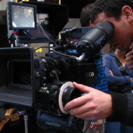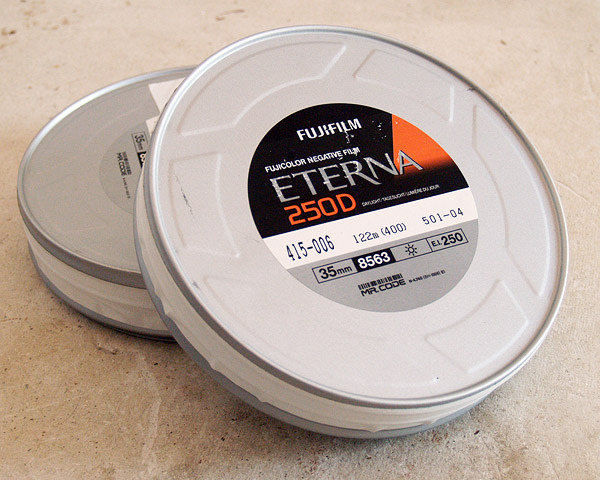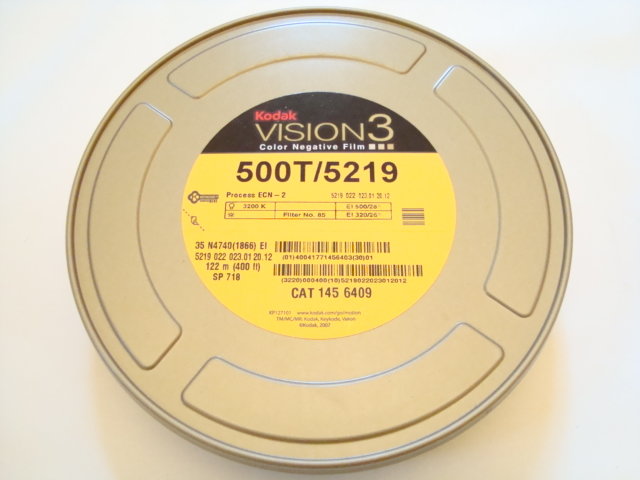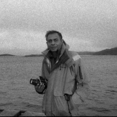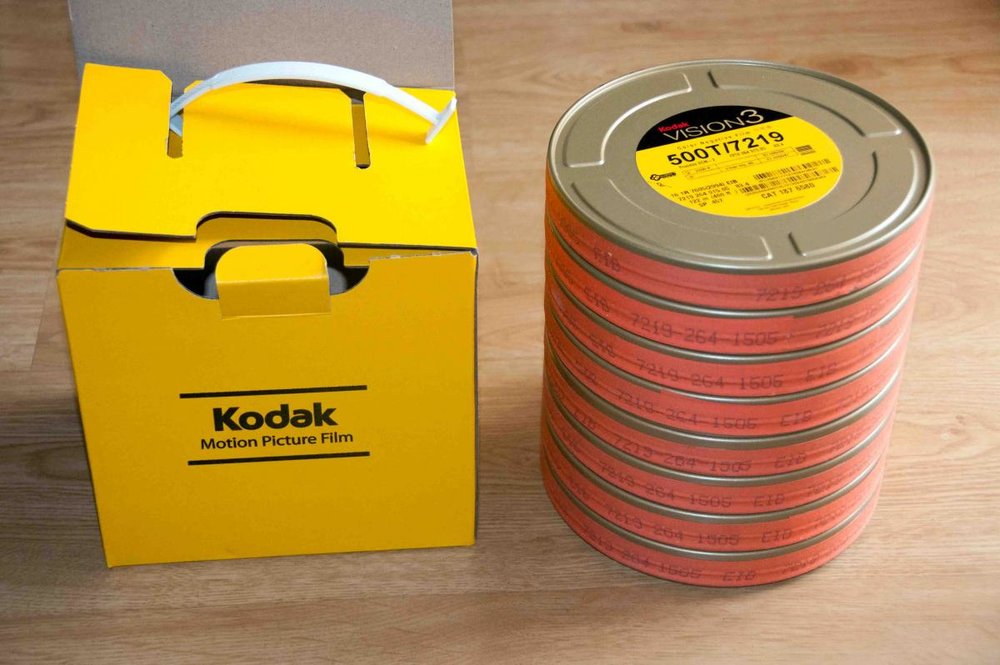Search the Community
Showing results for tags 'KODAK'.
-
Renowned Cinematographer John Bailey to Judge Competition ROCHESTER, NY (March 19, 2015) - As part of Kodak's ongoing commitment to the next generation of filmmakers, the company has issued its annual call for entries in the 2015 KODAK Scholarship Program. This international program is designed to encourage and foster new talent by honoring student filmmakers who demonstrate exemplary filmmaking skills and creativity at the undergraduate and graduate levels. Three Student Scholarship Awards and two Student Cinematography Scholarship Awards will be granted. The deadline for submissions is May 15. John Bailey, ASC, a distinguished cinematographer who has advanced the art of cinema, will lead a panel of judges to assess the entries based on sample reels, faculty recommendations, and academic achievements. This is Bailey's fourth consecutive year as a judge. In addition to receiving the Lifetime Achievement Award from his peers in the American Society of Cinematographers (ASC) this year, his long list of credits include American Gigolo, Ordinary People, The Big Chill, The Accidental Tourist, Groundhog Day, As Good as it Gets, Incident at Loch Ness, Big Miracle, The Way Way Back, and A Walk in the Woods, among many others. He also writes a blog for the ASC - John's Bailiwick - on a range of topics that affect the art and craft of filmmaking. Accredited film schools around the world may nominate up to two students for consideration for the KODAK Student Scholarship, and one cinematography student for the KODAK Student Cinematography Scholarship. The cinematography student nominee may also be nominated for the KODAK Student Scholarship Award. Submissions can be made through the online submission process which allows VIMEO or YOUTUBE URLs to link to samples of a student's work. Kodak, in collaboration with the University Film & Video Foundation (UFVF), holds this annual contest to encourage students pursuing a career in filmmaking. The following prizes will be awarded to the finalists and announced in August: KODAK Student Scholarship: Gold: $5,000 Tuition Scholarship Award and $5,000 KODAK Motion Picture Product Grant Silver: $4,000 Tuition Scholarship Award and $4,000 KODAK Motion Picture Product Grant Bronze: $3,000 Tuition Scholarship Award and $3,000 KODAK Motion Picture Product Grant KODAK Student Cinematography Scholarship Award: First Place: $4,000 Tuition Scholarship Award and $5,000 KODAK Motion Picture Product Grant Award of Merit: $1,000 Tuition Scholarship Award and $3,000 KODAK Motion Picture Product Grant Since 1991, Kodak has been supporting future filmmakers and encouraging excellence in the field of motion picture education. The company's ongoing efforts include a range of opportunities that students and educators can use to enrich their knowledge of the art and craft of filmmaking, including educational materials and discounts, in addition to sponsorship of film festivals, awards, seminars and student showcases that raise awareness about emerging talent. For more information, visit www.kodak.com/go/education.
-
- Kodak
- scholarship
-
(and 3 more)
Tagged with:
-
Hello Everyone, There is no catch in the title, I have 8 rolls of Kodachrome super 8 from about 1999. You could still develop those rolls as B&W film. I'm just asking anyone that is interested to pay for shipping and shoot/use the films! I really want someone in this community to pick them up and make good use of them. I'll ship anywhere in the world, shipping cost will be payed via paypal only. Please PM if interested. Best, Oron.
-
Hey, I have read in several places that slower stocks yield a more contrasty look. Does anybody have any experience with this? Would Kodak 50D be noticeably more contrasty than, say, 250D? I am shooting a scene during an overcast day and am thinking that using 50D over 250D would give the image more contrast, as I am worried that the light may look too flat on the actor's faces. Alternatively, might it be better to go with a less contrasty stock and reserve option to add contrast in the grade?
-
Hey, I have read in several places that slower stocks yield a more contrasty look. Does anybody have any experience with this? Would Kodak 50D be noticeably more contrasty than, say, 250D? I am shooting a scene during an overcast day and am thinking that using 50D over 250D would give the image more contrast, as I am worried that the light may look too flat on the actor's faces. Alternatively, might it be better to go with a less contrasty stock and reserve option to add contrast in the grade?
-
New KODAK Director's Award, WIF Product Grant to be Presented at Slamdance & Sundance ROCHESTER, NY (January 19, 2015) - Kodak will once again support the independent filmmaking community at the Slamdance and Sundance Film Festivals, which run concurrently in Park City, Utah, beginning Jan. 21. At Slamdance, the inaugural KODAK Director's Award will be presented on Jan. 29 during the festival's awards ceremony. The winner, who will be chosen by a jury of Slamdance judges, will receive a KODAK Product grant valued at $10,000. Over on Main Street at the Sundance Film Festival, Women In Film (WIF) will present a KODAK Product grant for 5,000 feet of film as part of their Women In Film/The Incentives Office Grant on Jan. 25. This award - chosen by a jury of educators, filmmakers and artists from WIF - is presented to a female director in the Sundance Film Festival Shorts Program. "These two festivals showcase innovative filmmakers who bring fresh ideas and a new perspective to the screen every year, and Kodak is dedicated to supporting their art," says Andrew Evenski, President and General Manager for Entertainment & Commercial Films at Kodak . "Motion picture film plays an important role in the indie community, giving these unique storytellers the creative freedom and option to tell their stories as they envisioned." Many films screening at Sundance were produced on KODAK Film, including A Walk in the Woods (Dir Ken Kwapis, DP John Bailey, ASC); Christmas, Again (Dir Charles Poekel, DP Sean Price Williams); Digging for Fire (Dir Joe Swanberg, DP Ben Richardson); I Smile Back (Dir Adam Salky, DP Eric Lin); Mississippi Grind (Dirs Anna Boden and Ryan Fleck, DP Andrij Parekh); and Umrika (Dir Prashant Nair, DP Petra Korner), among others. At Slamdance, Tired Moonlight (Dir Britni West, DP Adam Ginsberg) chose Kodak film, alongside several shorts in the lineup. Both held in Park City, Slamdance takes place Jan. 23-29, and Sundance runs Jan. 21-31. For more information, visit www.kodak.com/go/filmworthy.
-
Anyone selling 35mm recans or knows someone who does? Looking for any of the following stocks: Kodak 5219, 5213, 5218, 5217 OR Fuji Eterna 8573, 8583, 8553. All in the range of 200T to 500T. Price per foot cannot exceed $.12 Willing to pay shipping cost! Thanks
-
Myself and John Holland will be taking a tour of Cinelabs, one of the two boutique film labs in London, on the 13th November to see their recently revamped facilities. If anyone would like to join us you'd be more then welcome, please let me know here and I'll add your name to the list.
-
Hello, We have 35mm film stock to sell: 760ft of short ends - Kodak 500 T / 5219. Purchased direct from Kodak. Available for £20 total. . 4 x 400ft rolls of Fuji Eterna 250D. Purchased from Bwark Films. Available for £80 total. The film is being kept in a fridge. Collection from South East London (SE4) would be ideal, but happy to negotiate alternative collection/delivery. Please enquiry via: akua@kindproductions.com. Thank you, Akua
-
Hi everyone, I'm shooting a short soon and due to budget reasons have a selection of stocks that have to be used. I was wondering if anyone had experience of a pull process on 5203, 1 or 2 stops. We're going for a pastel, soft contrast look which i've seen great examples of on Kodaks' faster stocks but was wondering how it might come out on 5203 as it seems naturally more vivid and contrasty. The kind of look is seen in the Gordon Parks image below (something comparable in an exterior). cheers!
-
I heard from a little birdie that Kodak film cement has recently been discontinued? Does anyone know if this is real and can anyone confirm this? I guess this means the end of negative cutting and cement splicing huh... Unless there is another company that makes film cement that I'm unaware of?
-
Five Film School Students Awarded KODAK Scholarships
Sue Smith posted a topic in Cinematography News
LOS ANGELES - Kodak and the University Film and Video Foundation (UFVF) have announced the recipients of the 2014 KODAK Student Scholarship Awards and KODAK Student Cinematography Scholarship Awards. The presentation was made Saturday night during the annual banquet and awards ceremony at the University Film and Video Association (UFVA) Conference, which was held last week at Montana State University. Kodak's annual global competition is designed to recognize emerging talent that demonstrates superior filmmaking skills and creativity. Selected by a panel of judges led by award-winning cinematographer John Bailey, ASC, this year's winners represent film schools in Hungary, Russia, Singapore, and the United States. The KODAK Student Scholarship Program Award winners are: Gold Award ($5,000 tuition scholarship award and $5,000 KODAK Motion Picture product grant) - Timothy Yeung from New York University's (NYU) Tisch School of the Arts Asia in Singapore for his film 90 Days. Yeung wrote, directed and produced the drama. Silver Award ($4,000 tuition scholarship award and $4,000 KODAK Motion Picture product grant) - Dustin Brown from Santa Monica College in California for Solidarity. Brown was writer, director, producer and editor of his narrative. Bronze Award ($3,000 tuition scholarship award and $3,000 KODAK Motion Picture product grant) - Anton Moiseenko from the Russian State University of Cinematography (VGIK) in Russia for his piece Experience of the Celestial Bodies. Moiseenko wrote and directed the documentary. The KODAK Student Cinematography Scholarship Award winners are: First Place ($4,000 tuition scholarship award and $5,000 KODAK Motion Picture product grant) - Balaji Manohar, also from Tisch Asia, for his cinematography on Little Master. Honorable Mention ($1,000 tuition scholarship award and $3,000 KODAK Motion Picture product grant) - Balász István Balász from the University of Theatre and Film Arts in Hungary for his visuals on House. Kodak partners with the University Film and Video Foundation to make this program possible. The UFVF is a not-for-profit organization that engages in and promotes worldwide education, research, innovation, and charitable activities in the arts and sciences of moving images and aural communication. Accredited film schools around the world nominated up to two students for consideration for the KODAK Student Scholarship, and one cinematography student for the KODAK Student Cinematography Scholarship. The cinematography student nominee could also be nominated for the KODAK Student Scholarship Award. They were judged on a combination of past work, faculty recommendations, and academic achievement. Judging took place in July. In addition to Bailey, the entries were judged by Melinda Levin, a professor at the University of North Texas and president of the UFVF, and Kodak's Lorette Bayle, who is also an award-winning filmmaker. Kodak introduced its worldwide film school program in 1991. Through the years, the program has grown to include a wide range of initiatives to help both students and educators enrich the development of their skills in the art and craft of filmmaking. For more information, visit www.kodak.com/go/education.- 1 reply
-
- Kodak
- scholarship
-
(and 3 more)
Tagged with:
-
Hi there everyone, greetings! Thought I will brief everyone on how super16 is still going popular with indie filmmakers and independent producers. 1. I shot a roadie film BOOM BOOM WALE in November last year for a director friend, is finally coming up for DI grading next week. The film was shot on a small budget. I used china balls and some practical lights for interiors and exteriors were all shot without lights. The results are good and the director is happy. 2. Am currently filming SANDRA BEDS SANDEEP on super 16 using Kodak Vision 3 stocks - 50D and 200T. My producer is a young guy who comes from television background. When we were doing pre prod he was slight apprehensive of super 16 being grainy. But I showed him some results and he loved it. He ran the numbers for both digital cine cameras and film cameras with stocks and he concluded that film turns out cheaper with good looks in built in the negative. and after that he hasn't looked back. What started as another shoestring film shot handheld turned into a full fledged feature. He hired studio spaces, built sets, got me lighting and grips package, generator vans, etc. He is satisfied with the results so far. almost 90% of principle photography is over. 3. The same producer now intends to start my second film JACKnJILL on Super 16 to be shot tentatively in Oct 2014. Earlier he was thinking of upgrading it to 35 but 16 is good he feels. It has a hell lot of character and feel.
-
BURBANK, CA - FotoKem recently completed the digital intermediate and post production services for the indie film Palo Alto. Working with director/screenwriter Gia Coppola and cinematographer Autumn Durald, FotoKem colorist Alastor Arnold fine-tuned the natural look created in camera to ensure the filmmakers' vision for this teen tale is reflected on the big screen. Based on James Franco's short story collection about rebellious high school kids in suburban California, Palo Alto has been praised for Coppola's coming-of-age storytelling and for Durald's evocative photography. The film, which marks Coppola's feature debut, garnered raves at the Tribeca, Telluride, Toronto and Venice film festivals before its recent release. "Gia and I had worked together on five projects prior to this feature, so we have a similar visual language, taste and sensibilities," says Durald. "Gia is from a photography background, and we pulled a lot of photographic references for the tone and mood we wanted - photos by Stephen Shore and William Eggleston. It was important to have a more filmic, softer texture to the image that harkened back to movies like The Outsiders and Dazed and Confused - something that looked more aged with softer tones in the blacks as well. And nothing overly saturated and contrasty." Durald shot the feature with a Panavised RED Epic camera, mounted with Panavision Super Speed lenses and vintage 1970s glass to give a softer feel to the image. The on-set DIT handled basic data management and adjusted stills in REDCINE-X, but no LUTs were applied. Durald's RED raw R3D files were transcoded for final color using REDlogFilm for flexibility with various film/lab emulations. When Coppola and Durald met with Arnold, they brought their look-book of still photography and suggested some films for him to watch, including The Last Picture Show, American Graffiti and The Virgin Suicides. They also experimented with different combinations of film emulation LUTs and grain treatments on various scenes from the feature. "First and foremost, they wanted a very filmic approach to keeping the image natural, smooth, and most importantly beautiful," recalls Arnold. "We weren't pushing in a hyper digital direction. Autumn's photography was awesome, a unique look with a consistency of tonality - it was in a very warm place with naturalistic skin tones." Arnold demonstrated Fuji and Kodak film emulation LUTs along with variants involving slightly different color spaces and lab processes. "We were really happy with the Kodak LUT as the base, and then we added grain over that as well," says Durald. Using the Quantel Pablo for grading, Arnold suggested using its noise treatment feature in different blending modes and intensities to give a grain pass to the entire film. "It all ran in real time, so it was really interactive and fast to adjust noise to emulate different exposures," he reports. He gave particular attention to sodium vapor night exterior shots, tilting toward warm ambers instead of greens and making sure that black levels "felt appropriate for night but didn't bury anything - you always felt you could get into them." Arnold credits Durald's talents as a DP with making the DI process more about collaboration and experimentation than fixing things. "We never struggled to match a key to another key or to even things out," Arnold notes. "It was all about finding the right feel, tonalities, densities and grain. It was great to have the filmmakers walk in with a concise understanding of where they wanted to go stylistically with the finish." Durald concludes, "Alastor has a really great eye - he understood what we were going for from the outset. It's really important to find people with the same taste and sensibilities you have who can translate your visual language emotionally and technically."
-
- post production
- digital
-
(and 4 more)
Tagged with:
-
ROCHESTER, NY (March 24, 2014) - The KODAK Scholarship Program is now accepting submissions for the 2014 competition. This international program acknowledges student filmmakers who demonstrate exemplary filmmaking skills and creativity at the undergraduate and graduate levels. The deadline for entries is May 16. John Bailey, ASC, a distinguished cinematographer known for his artistic contributions to cinema, will spearhead the panel of judges, who will assess entries based on sample reels, faculty recommendations, and academic achievements. This is Bailey's third consecutive year as a judge. His long list of credits include American Gigolo, Ordinary People, The Big Chill, The Accidental Tourist, Groundhog Day, As Good as it Gets, Incident at Loch Ness, Big Miracle and The Way Way Back, among many others. He also writes a blog for the American Society of Cinematographers - John's Bailiwick - on a range of topics that affect the art and craft of filmmaking. This year, Kodak introduces a new, online submission process to make entering easier. In addition to an online entry form, film schools can now use a public VIMEO or YOUTUBE URL to upload a sample of the student's work that best exemplifies their filmmaking skills. Accredited film schools around the world may nominate up to two students for consideration for the KODAK Student Scholarship, and one cinematography student for the KODAK Student Cinematography Scholarship. The cinematography student nominee may also be nominated for the KODAK Student Scholarship Award. Kodak, in collaboration with the University Film & Video Foundation (UFVF), holds this annual contest to encourage students pursuing a career in filmmaking. The following prizes will be awarded to the finalists and announced in August: KODAK Student Scholarship: Gold: $5,000 tuition scholarship and $5,000 KODAK Motion Picture Film grant Silver: $4,000 tuition scholarship and $4,000 KODAK Motion Picture Film grant Bronze: $3,000 tuition scholarship and $3,000 KODAK Motion Picture Film grant KODAK Student Cinematography Scholarship Award: First Place: $4,000 tuition scholarship and $5,000 KODAK Motion Picture Film grant Honorable Mention: $1,000 tuition scholarship and $3,000 KODAK Motion Picture Film grant Since 1991, Kodak has been supporting future filmmakers and encouraging excellence in the field of motion picture education. The company's ongoing efforts include a range of opportunities that students and educators can use to enrich their knowledge of the art and craft of filmmaking, including educational materials and discounts, in addition to sponsorship of film festivals, awards, seminars and student showcases that raise awareness about emerging talent. For more information, visit www.kodak.com/go/education. # About Kodak Kodak is a technology company focused on imaging for business. Kodak serves customers with disruptive technologies and breakthrough solutions for the product goods packaging, graphic communications and functional printing industries. The company also offers leading products and services in Entertainment Imaging and Commercial Films. For additional information on Kodak, visit us at kodak.com, follow us on Twitter @Kodak, or like us on Facebook at KodakNow. About Kodak's Entertainment Imaging Business Kodak's Entertainment Imaging business is the world leader in providing motion picture film and imaging products, services, and technology for the professional motion picture and exhibition industries. For more information, visit www.kodak.com/go/motion. Follow us on Facebook (facebook.com/KodakMotionPictureFilm), Twitter (@Kodak_ShootFilm), and YouTube (youtube.com/KodakShootFilm). (Kodak is a trademark.) 2014 Media Contacts: Lisa Muldowney, ignite, +1 760-212-4130, lisa@ignite.bz Sally Christgau, ignite, +1 415-238-2254, sally@ignite.bz
-
- cinematography
- filmmaker
-
(and 2 more)
Tagged with:
-
Hello everyone, I'll be shooting a short film this month, for which I need to emulate the look of an early b&w silent film. It is a bold look but has to be watcheable as the entire movie is shot this way. I'll be shooting on Super 16, and was considering a couple options regarding film stock and processing: - Shooting black and white directly on 7222 stock, exposing normally. I like the idea, the stock is naturally grainy, but the dynamic range is quite limited. - Shooting 200T 7213, under-exposing the neg and then push-processing by one stop. Black and white would be done in post. It is risky, as the image is probably going to be grainy, high-contrast and the blacks will be muddy ; but I was thinking all of this would help "sell" the look. - Shooting 500T 7219, over-exposing 2/3 stop and then pull-processing. Black and white done in color grading as well. I like the idea of keeping color information to grading, and this looks like the safest option to me. As far as lenses and diffusion is concerned, it will be a series of old superspeeds, which I will be diffusing with something like a Glimmerglass or a black soft net. I know I should shoot tests, and I will. But I'd be glad to hear your opinions and if you think there's an obviously better option. Thanks ! G.C.
- 19 replies
-
- processing
- kodak
-
(and 2 more)
Tagged with:
-
Hey guys, I'm looking for a bit of advice, stock-wise. We're shooting the first ten minutes of our feature film this month and unfortunately my DP is as unfamiliar with film as I am. For outdoor scenes, I'm looking into the KODAK Vision 3 250D. One shot in particular, we transition from the roof of our building to the inside of our apartment. I dug up an article on Fuji's old 250. The tester claimed it would work very well under such a transition. I'm assuming that Kodak can achieve the same result? http://www.fujifilm.com/products/motion_picture/lineup/eterna_vivid250d/demo/ what would you recommend, lighting-wise, once we hit the interior. In the same one-shot, we travel quite aways around the apartment. Sometimes, windows are plentiful, sometimes not so much. for everything else, I thought we could use kodak 500t. but I don't know how that would match up either. does anyone know if I'm looking in the right places? if not, can you point me in the right direction. (i also considered throwing an 85 on something like a 200t to achieve the same effect, but I'm new at this, and I don't really know what I'm talking about) thank you for your help, for more information on our movie check us out at po.st/sowhat
-
In the 86-year history of the Academy Awards®, no best picture winner has ever been made without motion picture film technology - a streak that continued with 12 Years a Slave winning the 2014 Oscar®. In addition to best picture, films originating on Kodak also won Oscars® in best foreign language film (The Great Beauty) as well as best actress (Cate Blanchett for Blue Jasmine), best supporting actress (Lupita Nyong'o for 12 Years A Slave), and adapted screenplay (12 Years a Slave). Every Academy Award®-winning actress and supporting actress has had her winning performance captured on film. Earlier in the weekend, Film Independent's Spirit Awards were dominated by 12 Years a Slave which took home awards for best feature, cinematography, directing, screenplay, and supporting actress. In the history of the Independent Spirit Awards, every best picture winner has originated on film. Other films on Kodak that received Spirit Awards were Fruitvale Station (Best First Feature), Blue Jasmine (Best Actress) and Mud (Robert Altman Award). "We're honored so many exceptional filmmakers selected KODAK Film to tell their award-winning stories," notes Andrew Evenski, president and general manager of Kodak's Entertainment and Commercial Films Group. "Filmmakers choose celluloid for the rich detail and bold colors which help convey emotions and visual nuances that resonate with audiences. We're proud of our long history with the motion picture industry - a relationship we look forward to continuing." Kodak's Entertainment Imaging Division is the world-class leader in providing film, digital and hybrid motion imaging products, services, and technology for the professional motion picture and exhibition industries. For more information, visit www.kodak.com/go/motion. Follow Kodak on Facebook (www.facebook.com/KodakMotionPictureFilm), Twitter (@Kodak_ShootFilm) and YouTube (www.youtube.com/KodakShootFilm).
-
- 1
-

-
- Film
- Academy Awards
-
(and 3 more)
Tagged with:
-
Hi there everyone,Greetings and a very happy new year. I am coming up with a feature shoot where there is a small under water 'fantasy' sequence (ok, clue is a mermaid in the sea).Logistics wise we are not ready to go and shoot either in sea or in a swimming pool. Couple of years back, I guess in 2009, there was an awesome thread on CML about shooting dry for wet. That thread is buried under 8000emails and I cant locate it. I need advice of all you experience cinematographers about how best to cheat and give it an underwater look.I will submit the following for your consideration:-a) it is a fantasy sequence. doesn't have to look like a real underwater.b) no long takes. just inserts/reactions and Medium shots of the artist underwater. What we have is - a studio space, lights, fans, grips and an awesome art director, Arri SR3. We do not wish to go the digital route in creating bubbles etc. Looking forward for your tips. regards Prashantt Rai
-
Hey Everyone, Here's a long form commercial I shot on Super 16mm on the Krasnogorsk K3. I'm really happy with the way it turned it out. I showed it to non industry people and someone asked me how I got it to look the way it does and my I told them, "It looks like that because it was shot on film". I feel like it wouldn't be the way it is if I shot it on any other format. I would definitely appreciate any comments or criticisms! Thanks, Mike https://vimeo.com/74120596
- 12 replies
-
- 2
-

-
- Super 16mm
- Kodak
-
(and 4 more)
Tagged with:
-
After 6 years hiatus Super16 makes a comeback in British TV industry. Super 16 originated material will be accepted for broadcast. http://www.screendaily.com/territories/uk-ireland/uk-tv-to-allow-super-16-for-hd/5062821.article?blocktitle=MORE-TOP-NEWS&contentID=40294
-
Producers Keanu Reeves and Justin Szlasa have chosen to create a film element of their feature documentary Side by Side on KODAK VISION3 Color Digital Intermediate Film 2254. This intermediate post production step will also provide the producers with a master for making 35mm film prints. The 2254 will then be archived at the Academy Film Archive, which is providing substantial and instrumental support to preserve this culturally significant exploration into the evolution of digital and film formats. Side by Side recently aired on PBS after a successful run on the 2012 festival circuit, and a limited release in theaters. The Academy is also planning future screenings of the film. “We took a deep dive into the evolution of filmmaking technology and spoke to hundreds of artists and filmmakers to make this documentary,” says Reeves. “What we took away is that, right now, film is the only archival medium that is truly proven. We'd like Side by Side to be available for future generations, and we think creating film elements is the best way to do that.” KODAK VISION3 2254 Film faithfully retains nuances in colors, contrast and other characteristics of digitally created images, and offers exceptional dye stability, allowing for extended asset life. Technicolor New York is providing the transfer services, and the stock will be used as a master for generating a few high-quality release prints for upcoming 35mm film screenings of the documentary. By choosing this postproduction path, Side by Side will be preserved for more than a century. Side by Side investigates the history, process and workflow of both digital and film creation. The movie, directed by Christopher Kenneally, shows what artists and filmmakers have been able to accomplish with both film and digital and how their needs and innovations have helped push filmmaking in new directions. Interviews with directors, cinematographers, colorists, scientists, engineers and artists reveal their experiences and feelings about working with film and digital — where we are now, how we got here and what the future may bring. “At the end of the day, film is still the most stable and reliable preservation medium,” adds Andrew Evenski, President, Entertainment & Commercial Film, Kodak. “Only film offers a standardized, human-readable format that has been in existence for well over a century, and methods for retrieving content from a 35mm frame will exist well into the future. When content is preserved on film, no re-mastering is necessary.”
- 2 replies
-
- 1
-

-
- Documentary
- Kodak
-
(and 1 more)
Tagged with:
-
A friend of mine recently contacted me to say he had been rebuffed in trying to place a large individual order of film directly with Kodak UK. Like a number of individuals he has bought direct from Kodak UK for years but now Kodak UK has told him he has to go through a UK reseller and this came with no warning. Does anyone here know if Kodak UK's policy on selling direct for large individual orders of either 8 or 16 mm within the UK has changed and are they only going to sell via resellers even if the individual order is a large bulk order? If this is what Kodak is doing then is this a useful way to support the market? Buying direct from Kodak means a good deal on pricing through bulk buying, but going through a reseller at the retail to semi professional end of the market means individuals with the get up and go to buy large amounts of film may now have to pay more. Now don't get me wrong its good to support UK resellers and if Kodak UK is seeking to support UK resellers and the retail to semi professional market for film in the UK that is to be commended but if Kodak UK is now making every individual go through a reseller that doesn't actually grow the market for film within the UK. As individuals we all have finite means and if you and I have to pay more then we will end up ordering less stock i.e. at the end of the day Kodak will make less money. The other thing is since the demise of Stanleys here in London resellers here are not geared up for large orders such as what my friend was after unless you go up the chain to the likes of Panavision UK (and lets face it they are very, very unlikely to bother themselves with 8mm if you are a 8 mm shooter). We have some good activist, retail based resellers in the UK (bordering on heroic at times given the situation these past few years) but there is not the means nor the will across the market to grow it across the UK i.e. mostly you see a few rolls sitting by themselves on a shelf and no attempt to market them. Do people here have any ideas or suggestions as to how individuals could place large or bulk orders for film here in the UK or Europe if Kodak UK has changed its policy e.g. would it be possible to buy direct from Kodak in the US or Kodak elsewhere if the order was large enough?



